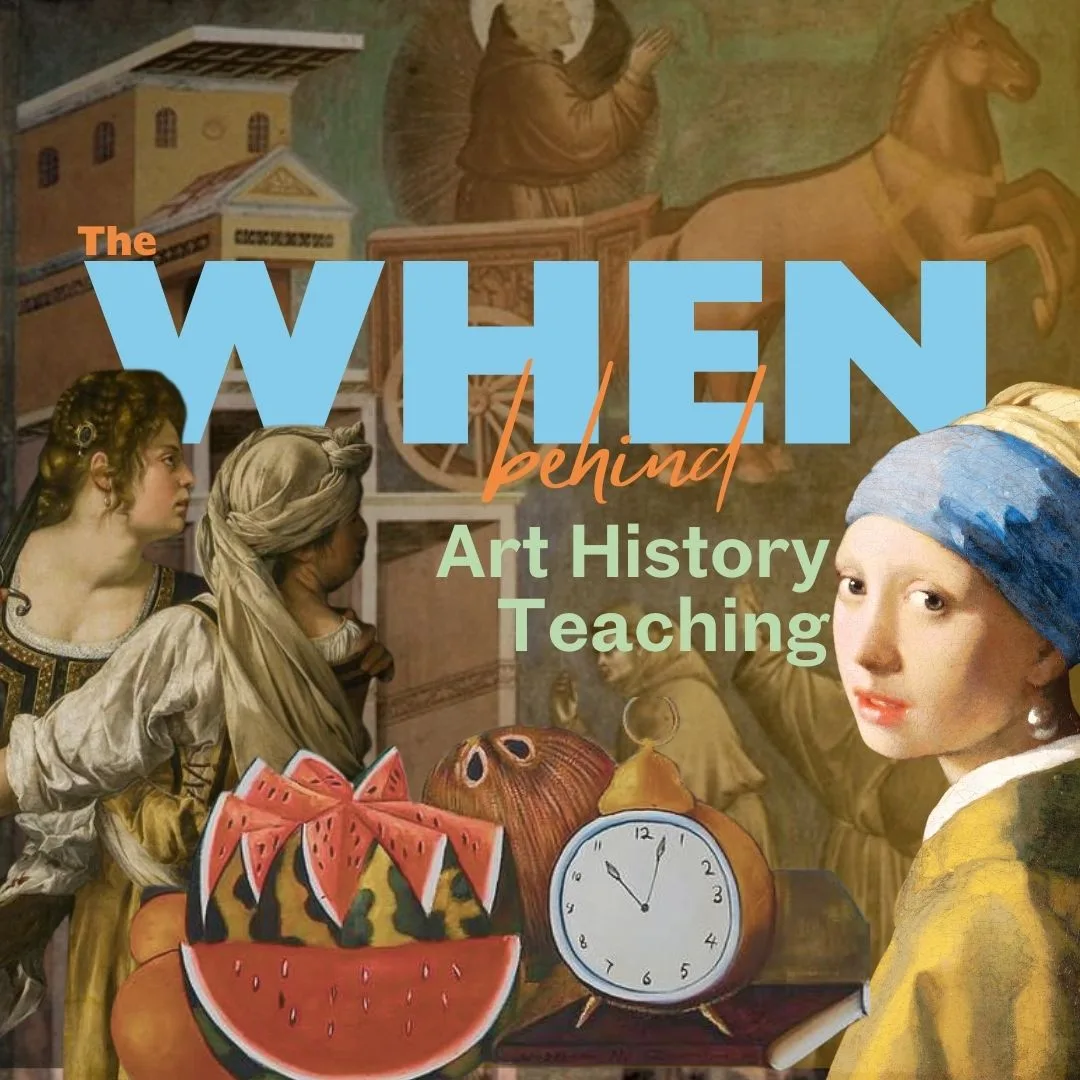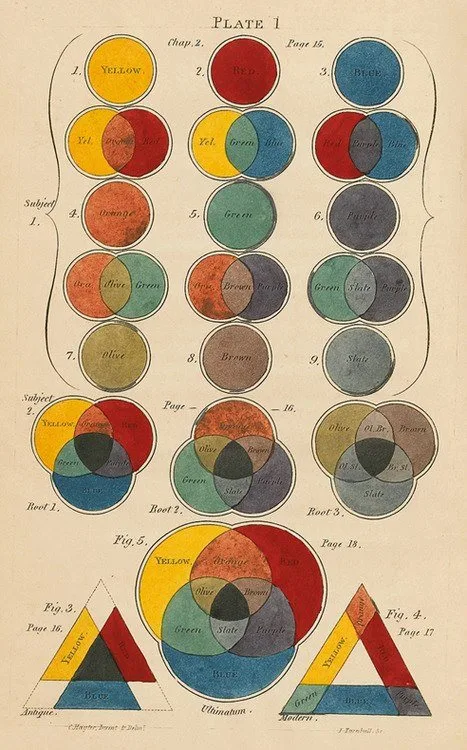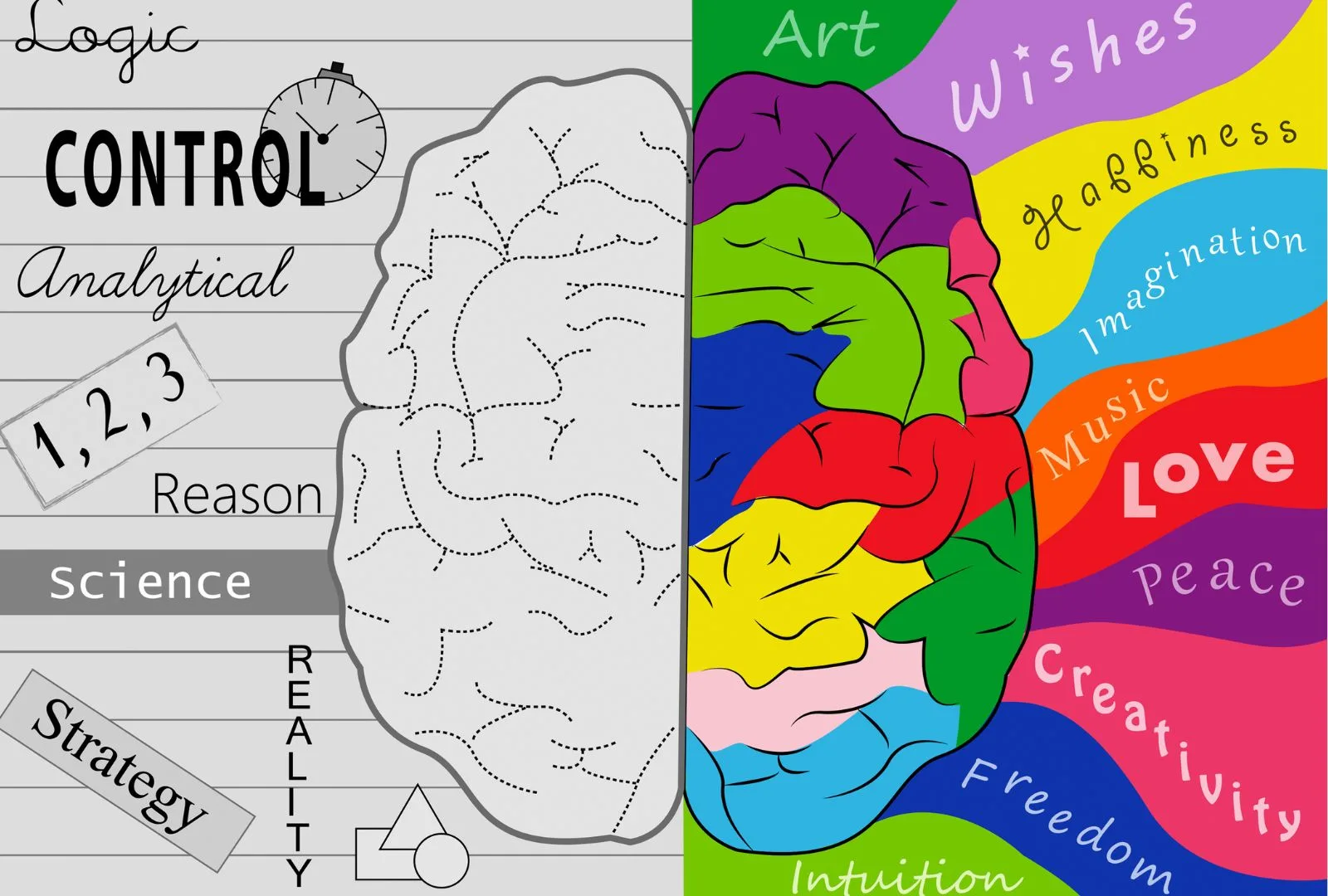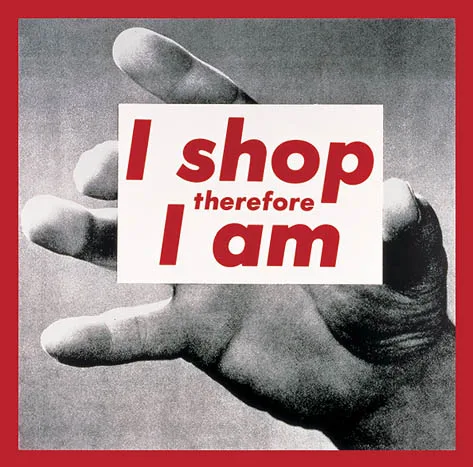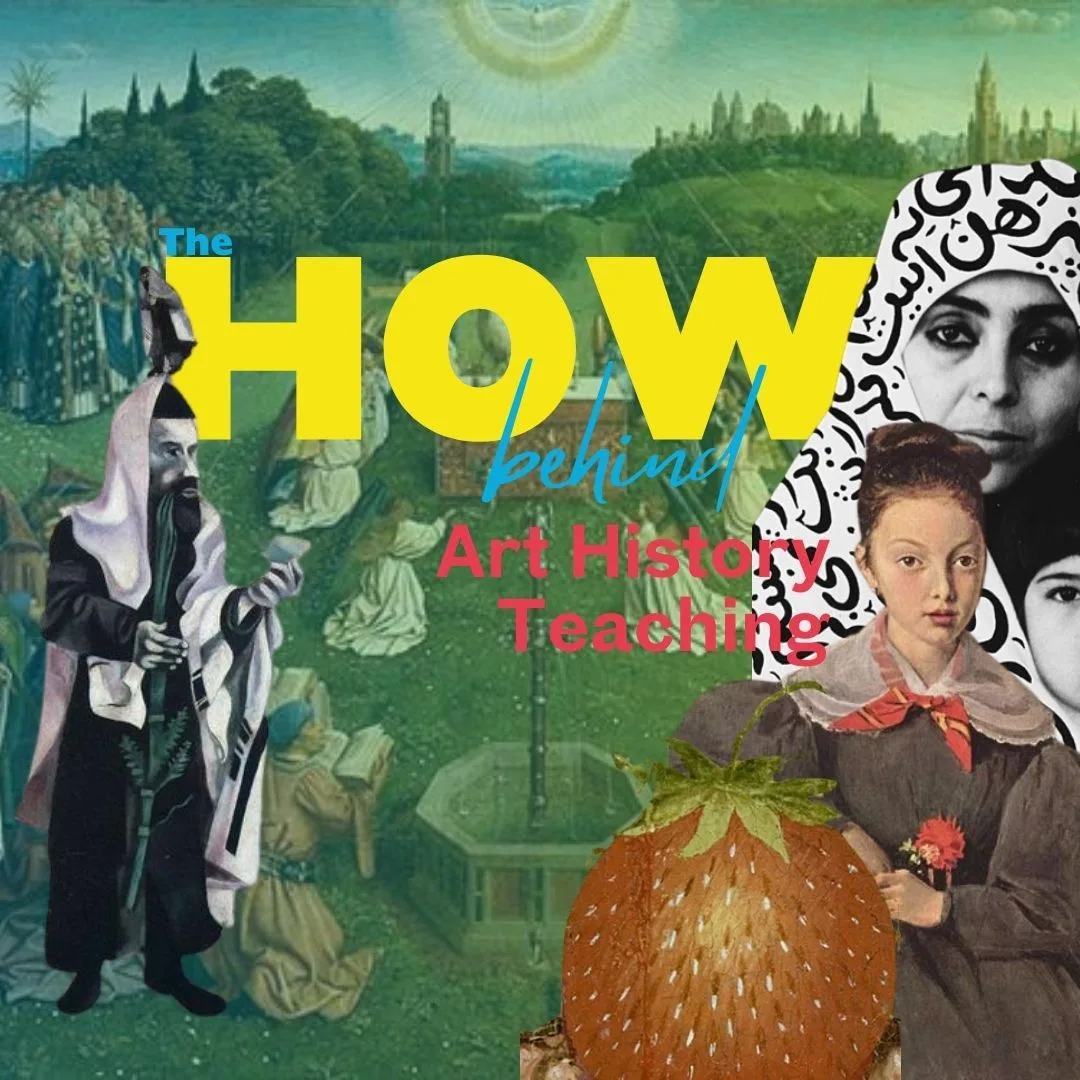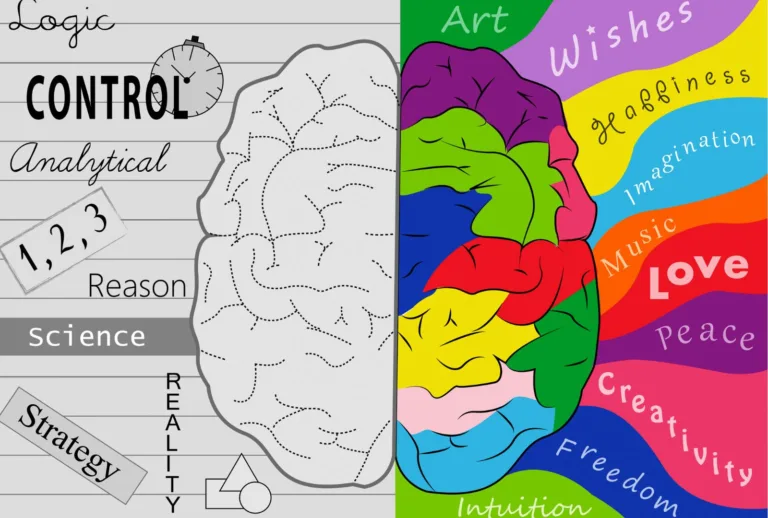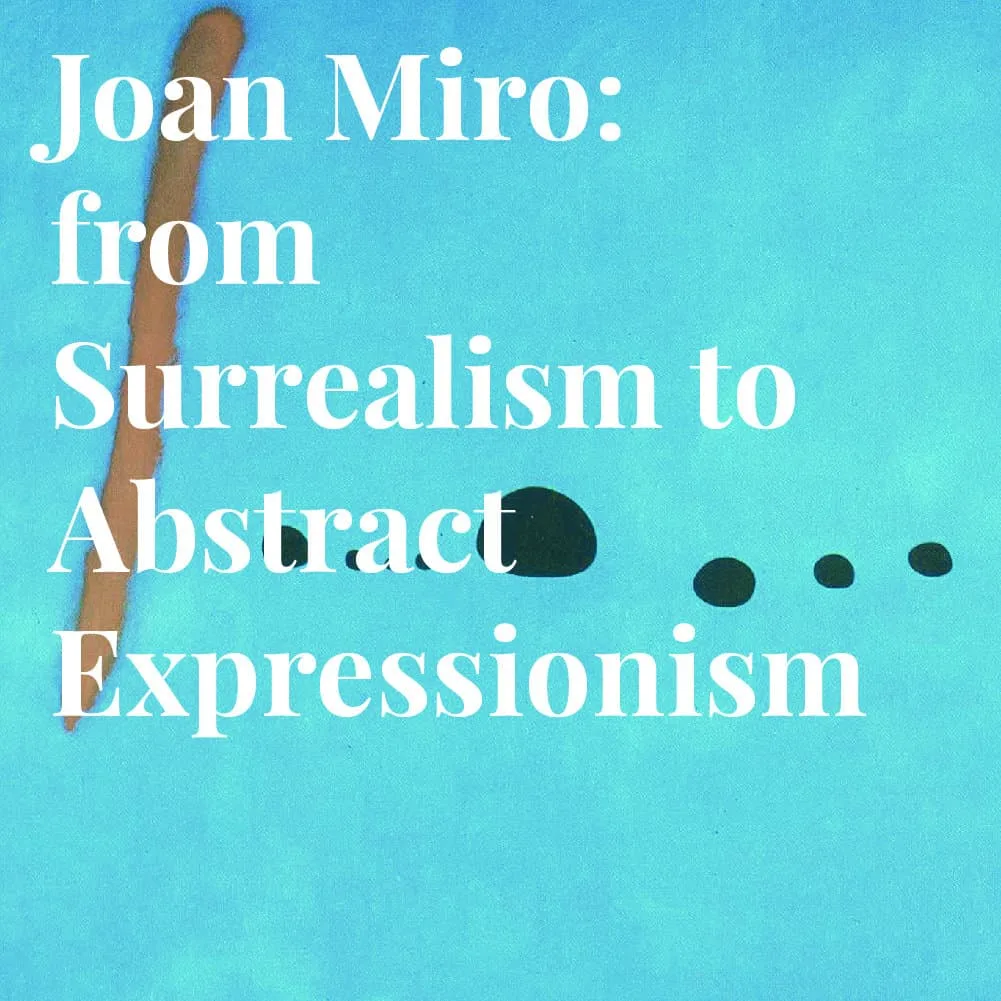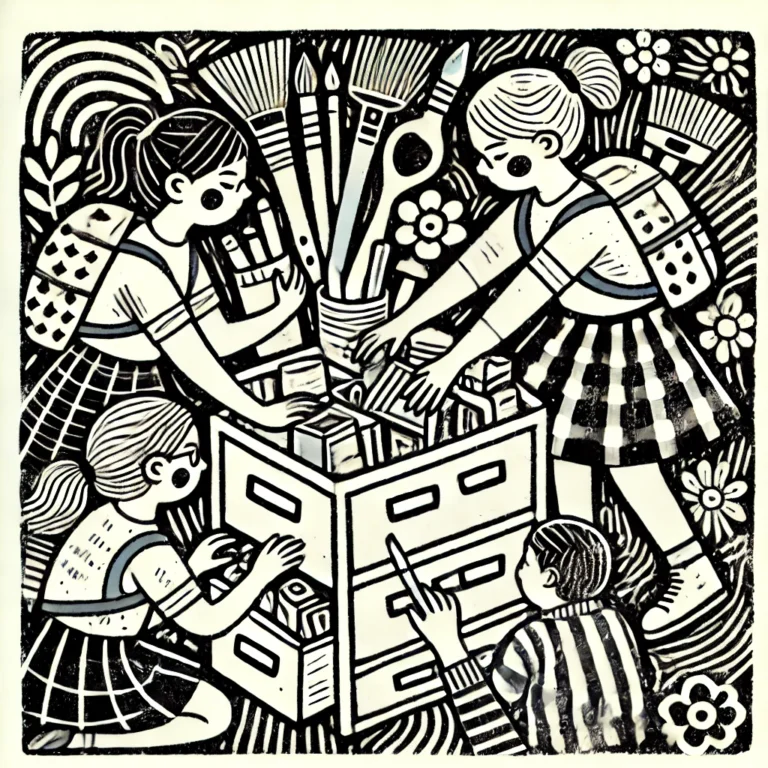The WHEN Behind Teaching Art History to Kids | Incorporating Art History in Kids Education
Art as a Lifelong Learning Approach
Incorporating art history in kids’ education shouldn’t be limited to a few scattered lessons. In my experience, the most meaningful engagement with art history happens when it becomes a regular part of learning—woven into the fabric of daily lessons, activities, and projects.
Over time, I’ve come to believe that art history can be incorporated into every subject, enriching children’s understanding of the world in ways that go beyond the visual. Of course, this is my personal philosophy, shaped by years of study and hands-on teaching.
I’ve seen firsthand how making art history a consistent part of the curriculum helps students not only understand art but also develop creativity, critical thinking, and cultural awareness.
When to Introduce Art History in the Classroom
The right time to introduce art history depends on the age group and the developmental stage of the students, but I’ve found that it can—and should—start early. The key is to tailor the content and approach to meet students where they are.
Early Childhood Education (Preschool-Kindergarten)
With young children, the goal is not to dive into formal art history but to introduce concepts in a way that’s playful and hands-on. At this stage, children are naturally visual learners. I like to focus on colors, shapes, and textures, using simple storytelling to introduce famous artworks. For instance, talking about Mondrian’s bold geometric shapes and primary colors can turn into a game of “What shapes do you see?” or “How many colors can you count?” This early introduction plants the seed, making art history something they’ll feel comfortable with later on.
At this age, children are most engaged when they can explore art with their hands. Inspired by Bruno Munari’s Art Labs, I like to emphasize tactile and sensory activities that encourage discovery through touch, rather than focusing on creating a finished product. For young children, art becomes more meaningful when they can physically interact with materials, allowing them to make sense of colors, textures, and shapes in ways that feel natural and intuitive.
One example of this is the “What Color is the Snow?” activity, where children explore the varying shades of white found in winter landscapes. In this process-based activity, they interact with materials like cotton, paper, and other white objects to discover how texture and light affect the perception of color.
The key here is to let children engage with the materials, touch them, and experience art through their senses.

Ancient Egypt
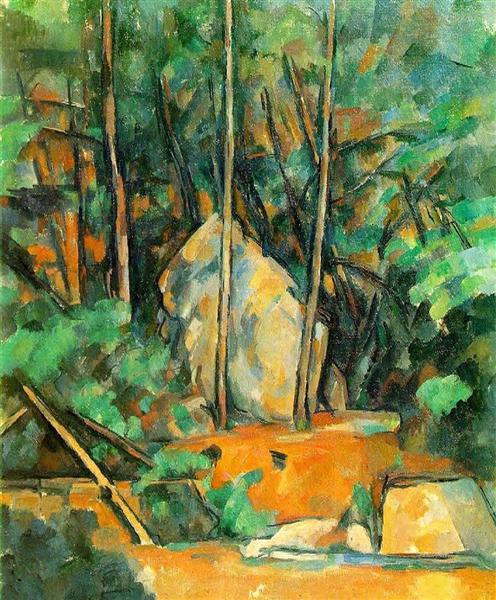
Paul Cezanne
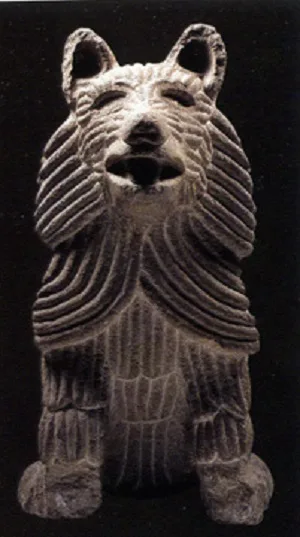
Aztec Art
Elementary Education (Grades 1–5)
At this stage, art history becomes a powerful tool to connect children with the past in ways that go beyond textbooks. For example, I like to introduce students to Ancient Egypt through its art—showing how the wall paintings and sculptures reflect not only religious beliefs but also the daily life and culture of the time. In a way, these works of art act as the “photographs” of their era. They give us a visual snapshot of a world that we can no longer see with our own eyes, offering insights into everything from daily activities like farming or trading to grand religious rituals.
What I find particularly compelling is how art allows us to imagine what life looked like for people in the distant past. When students see the detailed carvings on the walls of an Egyptian tomb or the vivid colors of a painted sarcophagus, it’s as if they are looking at a time capsule, a preserved image of a civilization that existed thousands of years ago. For children, this visual representation makes history come alive in a way that words often cannot.
However, as students grow older, there’s an opportunity to delve deeper into the complexities of these visual records. While art provides a window into the past, it’s important to recognize that these “photographs” are not neutral—they’re often filled with biases, commissioned by the powerful to convey specific messages or ideals. Older students can begin to explore this fascinating aspect of art history, asking critical questions about whose perspective is represented and what might be left out. This not only deepens their understanding of history but also teaches them to think critically about all visual media, past and present.
Middle School and Beyond (Grades 6–12)
By middle school, students are ready to explore the deeper contexts surrounding art. I believe this is the right stage to introduce more complex themes—connecting art to political movements, technological advances, and social change. For example, Impressionism can be discussed not just for its aesthetic beauty, but as a reaction to the industrialization and urbanization of 19th-century society. Through this lens, students can see that art reflects broader shifts and challenges in society, helping them make connections between historical events and artistic expression.
I also strive to show students that art history is not isolated from the world they live in. Art has long been a powerful tool for social change, and I think exploring this idea helps students engage critically with the art they study. For instance, in class discussions around art for social change, we might explore the works of Hannah Höch or contemporary figures like Ai Weiwei, showing how art has been used to challenge societal norms, question authority, or raise awareness about political issues.
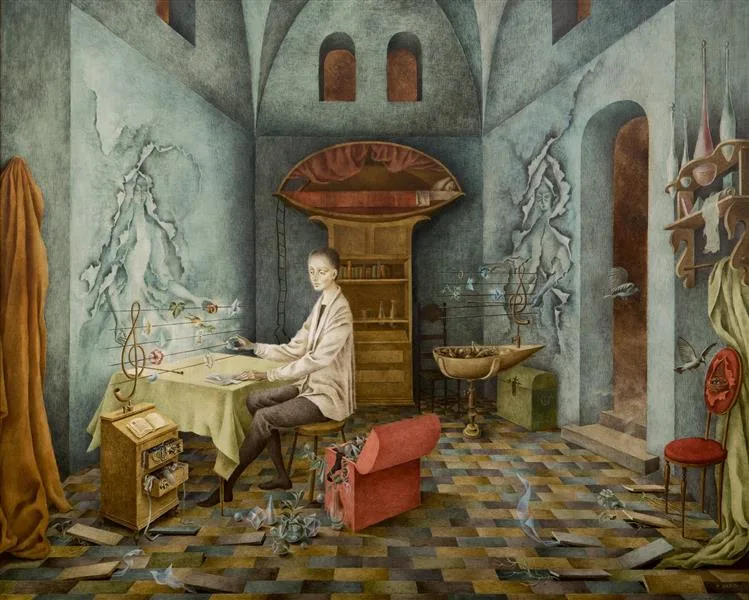
Remedios Varo

Wang Guangyi
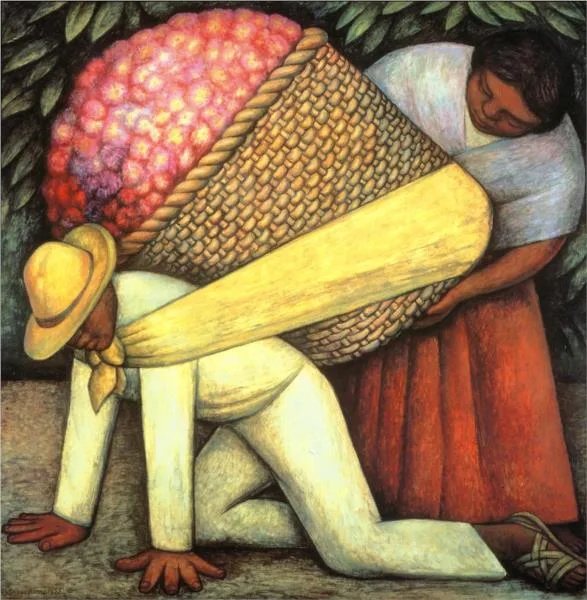
Diego Rivera
The same applies when discussing environmental issues through eco-art. Artists like Andy Goldsworthy or Agnes Denes highlight the relationship between humans and nature, using art to raise awareness about climate change and sustainability. I believe that teaching art as part of environmental activism helps students see how creativity can be a catalyst for change, offering them an opportunity to connect their own passions with the world of art.
Another key theme I emphasize is color theory. I believe that understanding color is more than a technical skill—it’s about conveying emotion, creating mood, and interpreting the world. Teaching students about the emotional impact of color, as seen in works like Mark Rothko’s color fields or Pablo Picasso’s Blue Period, gives them a deeper understanding of how artists communicate complex ideas through visual elements. I think this helps students not only appreciate art more fully but also apply these concepts in their own creative work.
Ultimately, I encourage students to think critically about the art they study, asking questions like What was the artist’s intention? What social, political, or environmental issues influenced the work?
This way, they begin to see art as a reflection of the world—both past and present—and understand its role in shaping our collective consciousness.
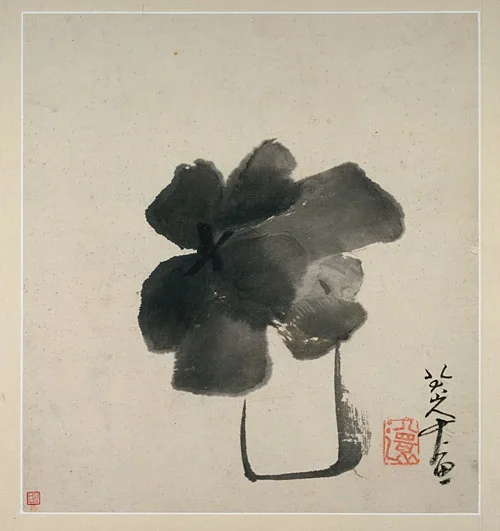
Bada Shanren
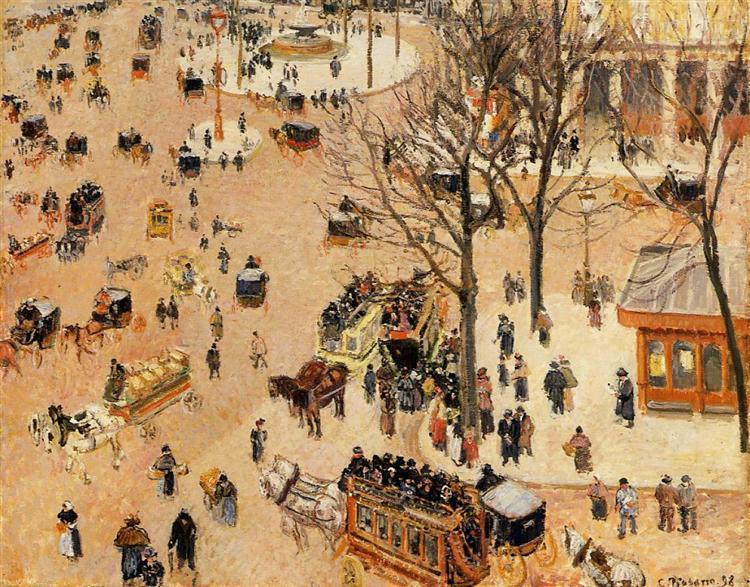
Camille Pissarro
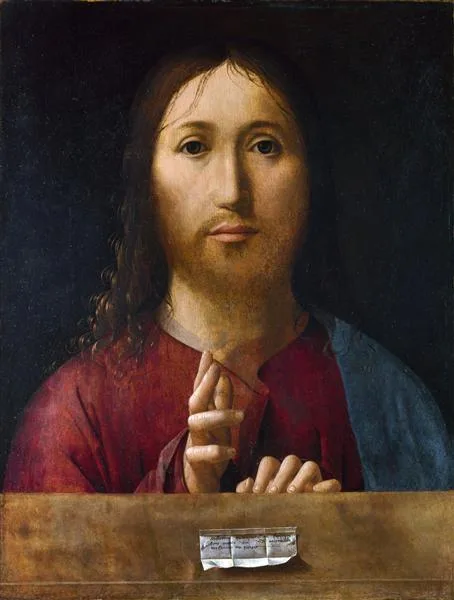
Antonello da Messina
Integrating Art into Daily Lessons
In my experience, art doesn’t need to be isolated as its own subject—it can be seamlessly integrated into daily lessons. Whether it’s history, literature, or even science, art can help make abstract ideas more tangible.
Cross-Subject Integration
I believe one of the most enriching ways to teach art history is by integrating it with core subjects. Art has the unique ability to connect seemingly unrelated fields, allowing students to see the interdisciplinary nature of learning. For example, when discussing the Renaissance, I like to explore how advancements in science and technology, such as the study of human anatomy, are deeply reflected in the art of Leonardo da Vinci and Michelangelo.
By linking these subjects, art becomes a way for students to visualize scientific progress, making abstract concepts more tangible. When students see da Vinci’s anatomical sketches, they not only learn about art but also understand the scientific inquiry that drove his creativity.
In mathematics, I find Cubism particularly useful for illustrating ideas like perspective and geometry. Artists like Picasso and Braque pushed the boundaries of how we view three-dimensional space, and their work opened the door to discussions on spatial reasoning. Through Cubism, students can explore how mathematical concepts are representedvisually, challenging traditional notions of perspective and encouraging a deeper understanding of geometry.
Incorporating art into subjects like literature and history can also enhance students’ engagement. For instance, while teaching a unit on World War I, exploring the Dada movement allows students to see how art responded to political upheaval and social disillusionment. In this way, art history becomes a critical tool for understanding the emotional and cultural context of historical events, offering students a multi-dimensional learning experience.
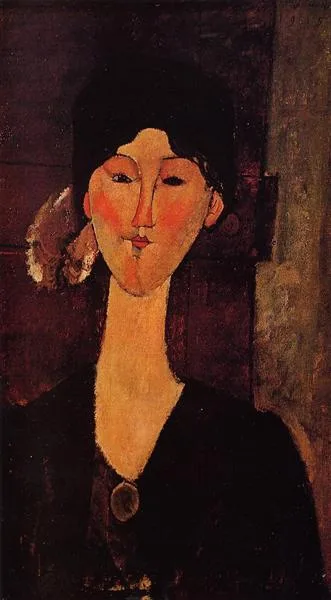
Amedeo Modigliani

Arthur Segal
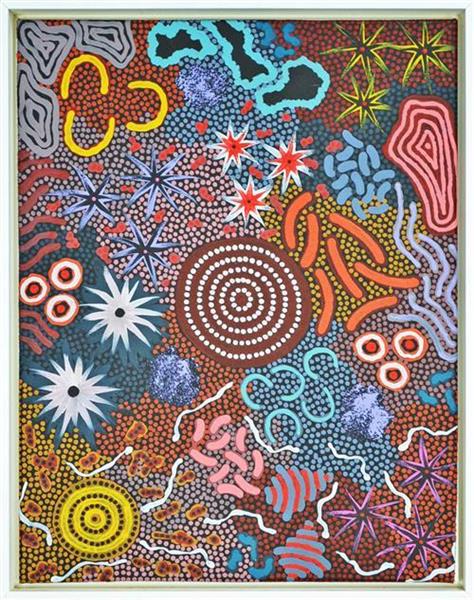
Michelle Possum Nungurrayi
Daily Art Activities
I also believe in the power of daily, art-related activities to help students develop a habit of thinking visually. These activities don’t need to be full lessons; even quick, five-minute prompts can inspire creativity and curiosity.
Similarly, in social studies, introducing a historical artwork related to the time period being discussed helps students visualize the cultural and social conditions of the era. For instance, showing students Jacques-Louis David’s neoclassical paintings while discussing the French Revolution gives them a visual representation of the political ideologies and values of that time.
These brief but regular art introductions prompt students to think critically, make connections across disciplines, and engage more deeply with the material.
By incorporating these activities into the daily rhythm of learning, I think we can help students develop a richer, more integrated understanding of both art and the world around them.


Joseph Kosuth

Seasonal and Thematic Approaches to Teaching Art History
One of the things I love about art history is how it lends itself to thematic and seasonal learning. Throughout the year, there are natural opportunities to bring art into the classroom, and I find these moments incredibly valuable for deepening students’ engagement.
Cultural Events and Holidays
Art can be a fantastic way to connect with cultural events or holidays. For instance, I often teach students about Mexican muralists during Hispanic Heritage Month, using artists like Diego Rivera to discuss the social and political messages embedded in their work. This not only exposes students to art but also allows for conversations about history, identity, and culture. Similarly, during Black History Month, I might introduce students to the work of Jacob Lawrence or Faith Ringgold, using their art as a lens to discuss African American history and social justice.
Seasonal Projects
I also like to use the seasons as a thematic approach. In the winter, for example, studying Pieter Bruegel the Elder’swinter landscapes becomes a way to talk about climate, geography, and daily life in 16th century Northern Europe. These seasonal projects allow students to explore art in a context that feels connected to the world around them, making it more relevant and engaging.
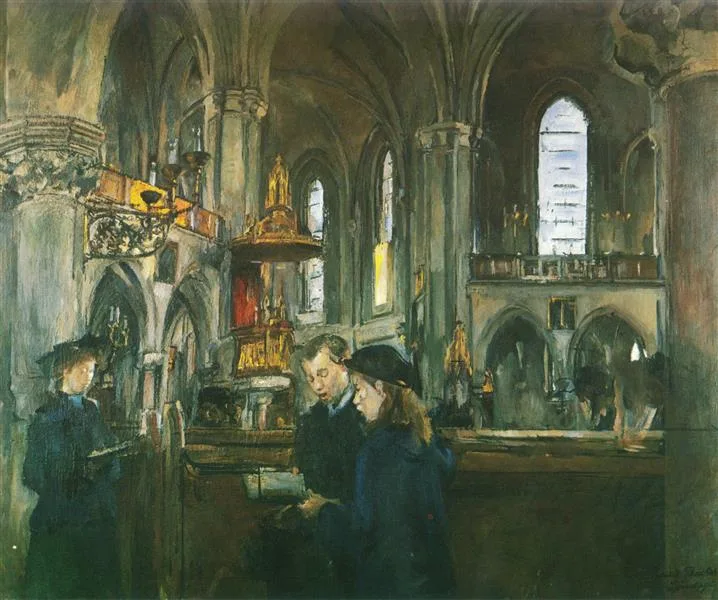
Harriet Backer
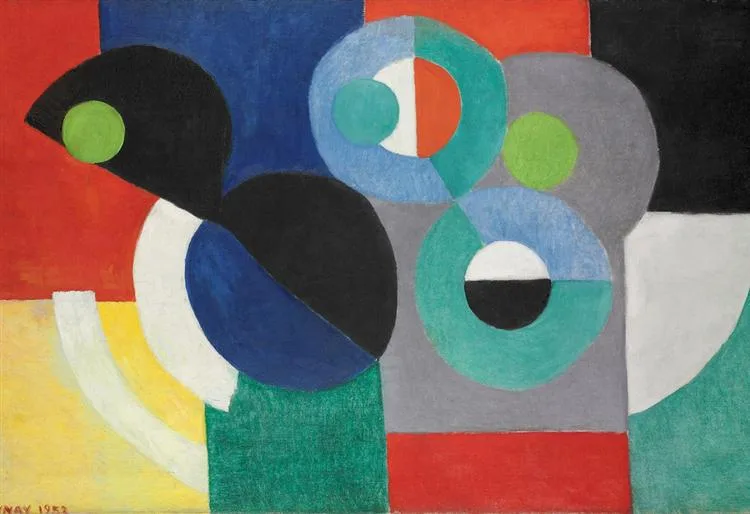
Sonia Delaunay
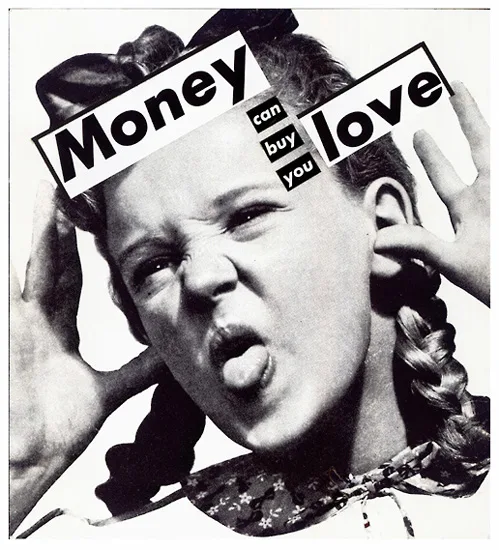
Barbara Kruger
Cross-Curricular Projects
In my experience, cross-curricular projects can transform the way students connect with both art and other subjects, leading to some of the most meaningful learning experiences. By merging art history with disciplines like math, science, and literature, students start to see the world through an interdisciplinary lens, where creativity and logic work hand in hand.
For instance, one of my favorite projects involves creating scientific journals with an artistic twist. Students research topics in biology or geology, such as plant structures or rock formations, and use botanical illustrations or geological drawings to document their findings. This activity teaches them not only to observe and record scientific phenomena but also to develop a deeper appreciation for how art has historically played a key role in scientific discoveries. In this way, students learn how art informs science and how scientific accuracy can enhance creative work.
Another exciting avenue is chemistry-inspired art. Exploring chemical reactions through art can be both visually stunning and educational. For example, students can create marbled paper by experimenting with hydrophobic and hydrophilic substances, observing how different materials repel or absorb water-based paints. Similarly, using chemical reactions like salt crystallization on watercolor paintings teaches them about the interaction between different elements, all while engaging their artistic side. Projects like this demonstrate that art and chemistry are not as far apart as they might seem.
Mathematics also provides fertile ground for artistic exploration. Tessellations, for example, offer a fantastic opportunity to introduce students to the concept of geometric patterns. Inspired by artists like M.C. Escher, students can create their own tessellated designs by manipulating shapes, learning about symmetry, repetition, and spatial reasoning in the process. This project bridges art and math, making abstract concepts like geometry more accessible and creative.
For students with an interest in language arts, calligrams—where words are arranged to form visual shapes—allow them to blend poetry and art in a unique way. Students can take a poem or a short story they’ve written and visually represent it through shapes that reinforce the meaning of the text.
This type of project encourages students to think about the relationship between form and content, showing them how words themselves can become a powerful visual tool. It’s an engaging way to explore the intersection between literature, language, and visual art.

Piet Mondrian
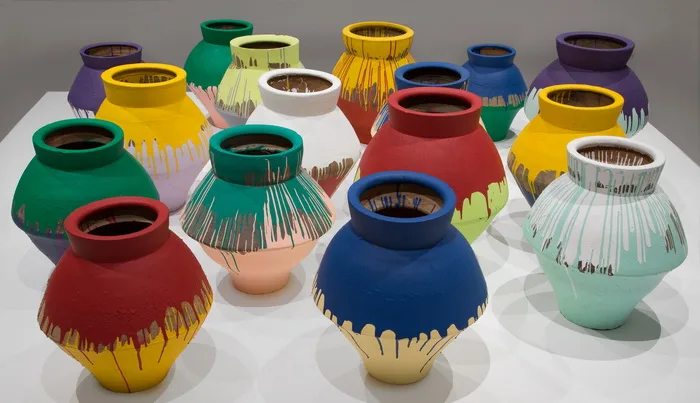
Ai Weiwei
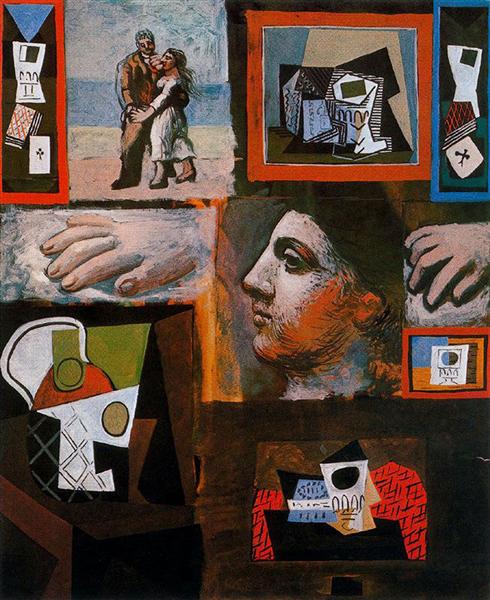
Pablo Picasso
Another project I’ve seen students love is string art—a hands-on way to visualize mathematical concepts like parabolas or explore artistic design through simple materials.
By using pins and colored thread to form intricate geometric patterns, students learn about tension, angles, and symmetry while creating visually appealing works of art. It’s an excellent project for helping them understand that math is not just theoretical—it can be beautiful and creative.
These types of interdisciplinary projects allow students to see how art, math, science, and literature intersect. Whether through tessellations, science journals, or calligrams, these projects encourage students to use critical thinking, problem-solving, and creativity in tandem, making their learning more dynamic and interconnected.
For more ideas on incorporating art into different subject areas, check out this post on how to incorporate art into different curriculums.
From STEM to STEAM: Bringing Art into Science and Technology
One of the most exciting shifts in education has been the evolution from STEM (Science, Technology, Engineering, Math) to STEAM, which integrates art into traditionally technical subjects. This approach not only makes learning more engaging but helps students develop creative problem-solving and critical thinking skills. STEAM is about showing that art isn’t separate from science and math—it’s deeply connected.
For younger students, STEAM projects can be simple and hands-on. For example, a class might explore color mixing by experimenting with light, using colored filters to observe how different hues combine to create new ones. This introduces them to both the science of light and the creativity of color theory.
Similarly, building bridges with art and engineering—using materials like straws and paper—encourages them to think about structure and design, while engaging their creativity.
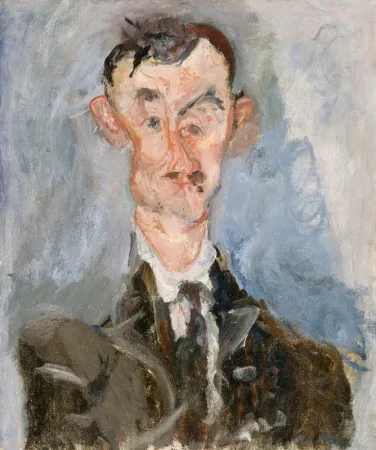
Chaim Soutine
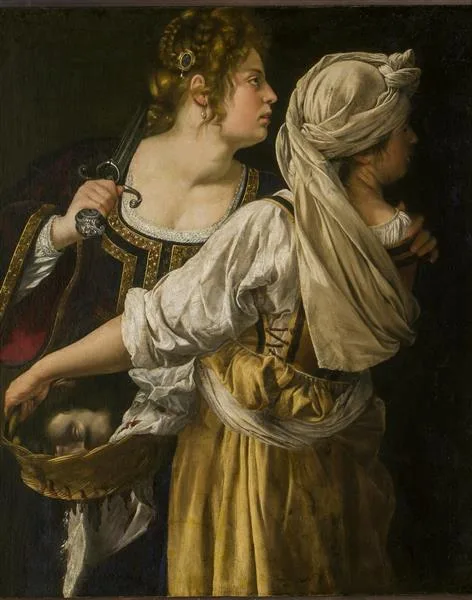
Artemisia Gentileschi

James McNeill Whistler
Beyond these projects, the true value of STEAM lies in the soft skills it fosters. It teaches students to think creatively, approach challenges from new angles, and work collaboratively—skills that are essential for both academic success and life outside the classroom. STEAM also builds emotional intelligence, as students learn to reflect on their work, adapt to new challenges, and communicate their ideas effectively.
While these are just a few examples, they highlight how integrating art into STEM subjects can deepen students’ understanding of both creativity and logic.
Art History in Extracurricular Activities
Art history doesn’t need to be confined to the classroom. In fact, some of the most meaningful learning happens when students are given the time and space to explore art outside of a structured environment. Extracurricular activities provide an opportunity for students to dive deeper into specific movements, artists, or techniques, cultivating a genuine passion for art that can last a lifetime.
Art History Clubs and Programs
Creating art history clubs or after-school programs allows students to engage with art in a more flexible, personalized way. These clubs give students the freedom to pursue their own interests, whether it’s researching their favorite artist, learning about a specific art movement, or even curating their own mini-exhibition. Unlike the structure of a traditional classroom, art history clubs can be student-driven, with participants choosing the topics they want to explore. This self-directed learning fosters a deeper connection to art and encourages students to take ownership of their learning journey.
These programs can also introduce students to new activities, like hosting student-led art critiques, where they analyze and discuss famous artworks or even their own creations. Such activities promote critical thinking, public speaking, and a stronger understanding of artistic techniques. Additionally, students can organize school-wide art exhibitions, where they present research on an artist or movement, providing an opportunity for collaboration, leadership, and creative expression.
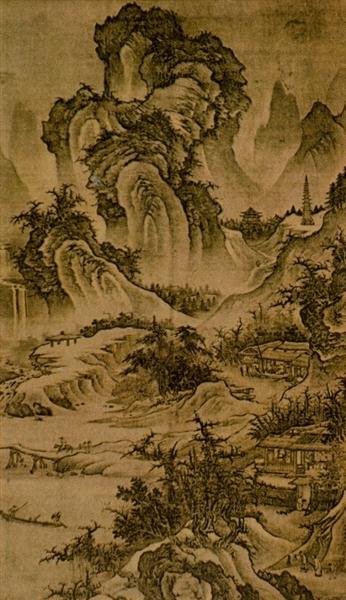
Guo Xi
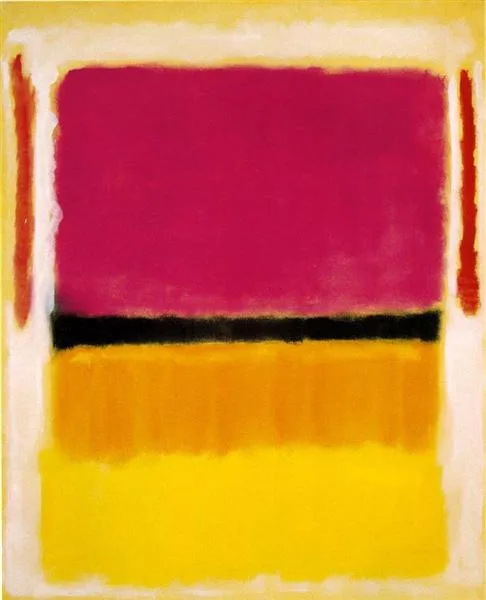
Mark Rothko
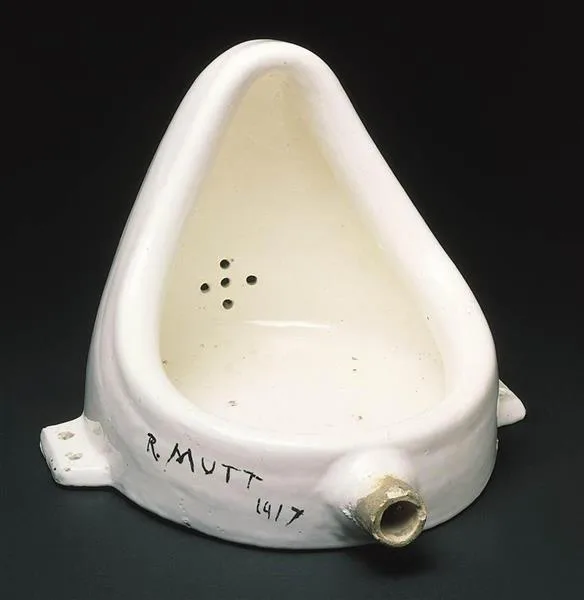
Marcel Duchamp
Field Trips and Virtual Museum Tours
Field trips to local museums or cultural sites are some of the most impactful ways to connect students with art. There’s something about standing in front of an artwork and seeing its texture, scale, and presence in real life that makes the art more tangible and emotionally engaging. Visits to museums also help students understand the broader historical and cultural context of the pieces they study in class, bridging the gap between classroom learning and real-world experience.
When in-person trips aren’t possible, virtual museum tours can be an excellent alternative. Museums like the Louvre, MoMA, and the British Museum offer virtual access to world-renowned collections, allowing students to explore artwork from across the globe right from their own homes. Virtual tours can be combined with class discussions, research projects, or even creative challenges, like having students pick a favorite artwork and create their owninterpretation of it.
At-Home Learning: Art History Beyond School
Art history learning doesn’t need to stop when students leave school. Encouraging students to explore art at home can further enrich their understanding and appreciation. One way to do this is by recommending art-themed picture books or biographies tailored to children.
These books introduce young readers to famous artists and their work in a format that’s both engaging and educational. For example, picture books from lists like Must-Have Children’s Art Books and 21 Children’s Books About Famous Artists offer beautifully illustrated stories that make art history more accessible and fun for younger students.

Frida Kahlo

Marina Abramović
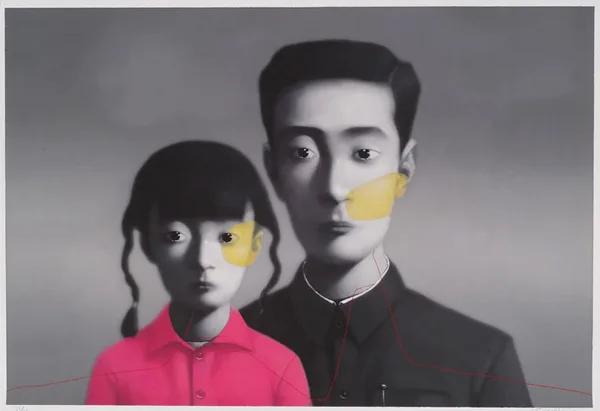
Zhang Xiaogang
Conclusion: Making Art History a Constant Presence in Learning
Integrating art history into daily learning is about making it a continuous and meaningful part of students’ educational experiences. Through cross-subject integration, seasonal projects, or extracurricular activities, art history can enrich a child’s understanding across various subjects, fostering creativity and critical thinking. Even when resources for dedicated art classes are limited, art can still serve as a valuable tool for exploring other topics and ideas.
These strategies reflect my personal approach to teaching, grounded in a belief that art can help children connect more deeply with the world around them. By weaving art into different areas of learning, we create opportunities for students to see it not just as a subject to study, but as a way of engaging with their surroundings, sparking curiosity and a lifelong appreciation for creativity.
Ultimately, the goal is to make art history a presence that continues to inspire and offer new perspectives, wherever it’s encountered.
Color Theory for Kids: How to Make It Fun, Personal, and Meaningful
AKA, how to take one of the least creative bits of art education and make it inspiring. Looking for…
How to Use Art to Discuss Tough Topics
There’s a common assumption that certain topics—grief, racism, identity, inequality—are too heavy fo…
The STEM vs STEAM Debate
For years, the STEM vs STEAM Debate has positioned STEM education as the gold standard—the clearest …
Teaching Visual Literacy: Empowering Critical Thinking Through Art
In a world saturated with images, teaching visual literacy to kids is more important than ever. By e…
The WHERE Behind Teaching Art History to Kids: All the Art Spaces for Kids
Art history isn't confined to galleries or textbooks—it thrives in the spaces where it's experienced…
The HOWs Behind Art History: Four Principles for Teaching Art History to Children
Teaching art history to children is more than just dates and facts—it's about sparking curiosity, ma…

